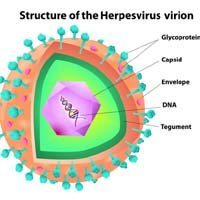Genetic Links to Mesothelioma Illustrated in New Interactive Model
 An interactive model of protein interactions could reveal new genetic links to mesothelioma and even lead to new treatments.
An interactive model of protein interactions could reveal new genetic links to mesothelioma and even lead to new treatments.
The model is the brainchild of researchers in the US and India. It is a map of the thousands of protein-to-protein interactions that govern how mesothelioma cells develop, thrive, and spread.
Understanding the genetic links to mesothelioma is key to understanding who gets the disease and who does not. It is also crucial for developing new therapies aimed at manipulating the way mesothelioma cells use certain proteins.
Proteins Govern Cellular Functions
Mesothelioma is a cancer of the membranes around organs. Asbestos is the main cause of mesothelioma worldwide. But only a small percentage of people who are exposed to asbestos go on to develop mesothelioma.
This is how scientists knew there must be genetic links to mesothelioma. A person’s genes influence which proteins their cells will express and in what amounts. Proteins are how cells communicate. They govern every aspect of a cell’s life.
Certain genetically-influenced patterns of protein expression make people more susceptible to mesothelioma. New immunotherapy drugs like Keytruda (pembrolizumab) and Opdivo (nivolumab) take advantage of these genetic links to mesothelioma. These drugs block proteins that help mesothelioma cells hide from the immune system.
But there are thousands of protein interactions happening inside mesothelioma cells all the time. Scientists only know about a small fraction of them. The goal of the new model is to reveal more of these crucial protein-protein pathways so that scientists can study and work with them.
Exploring the Genetic Links to Mesothelioma
The scientists who developed the new interactive map of genetic links to mesothelioma call it an “Interactome”. They have put it on a free website that other scientists can access.
To build the Interactome, the researchers started with 2,400 known protein-protein interactions at work in malignant mesothelioma. These interactions come from 62 genes already known to affect mesothelioma. The team used a computer program to predict more than 300 previously unknown MPM protein-protein interactions.
Twenty-eight of the proteins with genetic links to mesothelioma are already the targets of 147 FDA-approved drugs. But the Interactome also revealed some potential new mesothelioma treatments.
The team found five protein-protein interactions in mesothelioma that could be manipulated by five existing drugs. They include the prostate cancer drug cabazitaxel, the malaria drug primaquine, a drug for treating parasites called pyrimethamine, the antibiotic trimethoprim, and the diabetes drug gliclazide.
These drugs are not yet being used to treat mesothelioma, but they could be in the future. “Preclinical studies may be conducted in vitro to validate these computational results,” the research team suggests.
The report says they plan to update the Interactome every month as new information on the genetic links to mesothelioma emerges.
Sources:
Karunakaran, K, et al, “Malignant Pleural Mesothelioma Interactome with 367 Novel Protein-Protein Interactions”, April 1, 2021, bioRxiv, https://www.biorxiv.org/content/10.1101/459065v1.abstract
Mesothelioma Interactome, Wiki-MPM, https://hagrid.dbmi.pitt.edu/wiki-MPM/index.php/about





